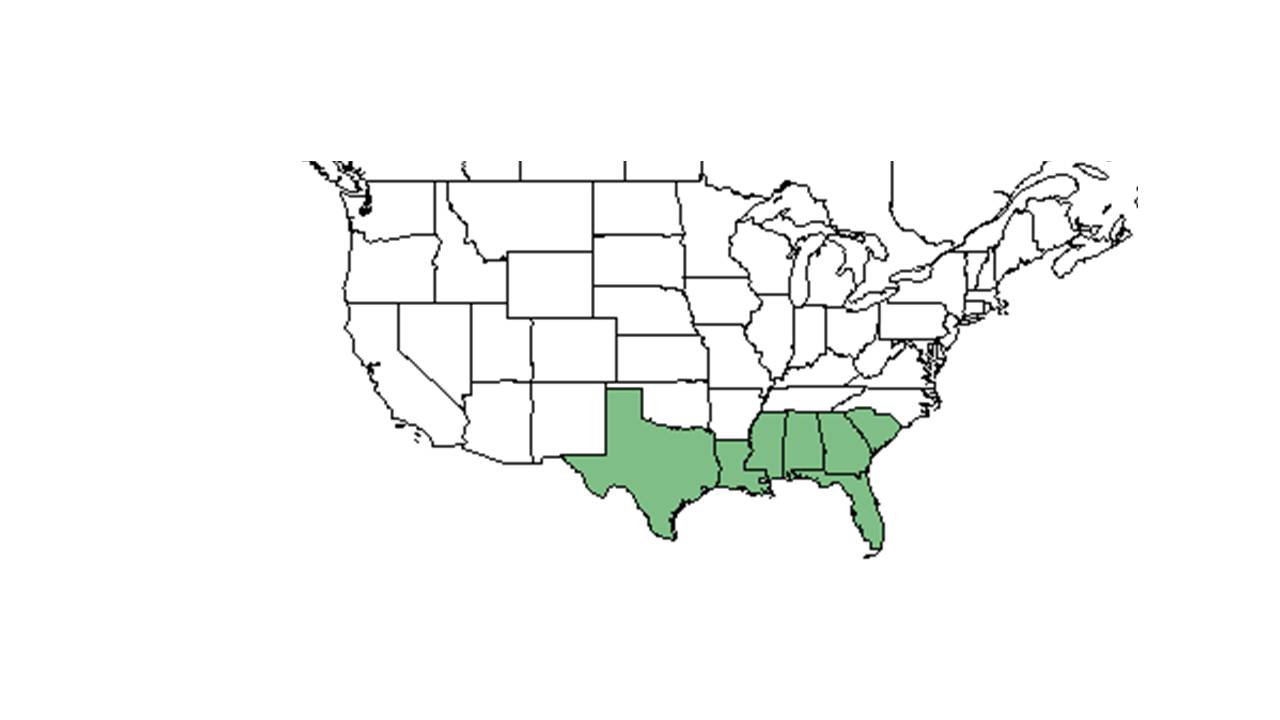Difference between revisions of "Habenaria quinqueseta"
(→Description) |
(→Conservation and management) |
||
| Line 49: | Line 49: | ||
==Conservation and management== | ==Conservation and management== | ||
| + | It is listed on the global status as G4 due to this species being critically imperiled in Texas, Louisiana, Georgia, and South Carolina.<ref name= "nature">[[http://explorer.natureserve.org]] NatureServe Explorer. Accessed: May 17, 2019</ref> | ||
==Cultivation and restoration== | ==Cultivation and restoration== | ||
Revision as of 20:09, 17 May 2019
| Habenaria quinqueseta | |
|---|---|
Error creating thumbnail: Unable to save thumbnail to destination
| |
| Photo was taken by Gil Nelson | |
| Scientific classification | |
| Kingdom: | Plantae |
| Division: | Magnoliophyta - Flowering plants |
| Class: | Liliopsida – Monocotyledons |
| Order: | Orchidales |
| Family: | Orchidaceae |
| Genus: | Habenaria |
| Species: | H. quinqueseta |
| Binomial name | |
| Habenaria quinqueseta (Michx.) Eaton | |

| |
| Natural range of Habenaria quinqueseta from USDA NRCS Plants Database. | |
Common names: Longhorn bog orchid; Long-horned habenaria; Michaux’s orchid; Longhorn false reinorchid
Contents
Taxonomic notes
Synonym: Habenaria quinqueseta var. quinqueseta
Description
A description of Habenaria quinqueseta is provided in The Flora of North America.
Habenaria quinqueseta is a perennial herbaceous species. It reaches heights of about 27 inches with white flowers.[1]
Distribution
Habenaria quinqueseta is distributed along the southeastern coastal plain, from South Carolina south to southern Florida and west to southeastern Texas.[2]
Ecology
Habitat
H. quinqueseta is generally found in moist hardwood hammocks, wet pine flatwoods, ditches, and Altamaha Grit outcrops.[2] It has been observed in moist to dry loamy or sandy soils of longleaf pine savannas and open mixed woodlands.[3] It is listed by the USDA Natural Resources Conservation Service as a facultative wetland species that most often occurs in wetland habitats but can also occasionally be found in non-wetland habitats.[4]
Associated species include Pinus, Quercus, Magnolia, Cornus, Liquidambar styraciflua, Vaccinium, Pinus taeda, and Quercus nigra.[3]
Phenology
This species generally flowers between August and October.[2] It has been observed flowering and fruiting in September and October.[3]
Seed dispersal
This species is thought to be dispersed by gravity. [5]
Conservation and management
It is listed on the global status as G4 due to this species being critically imperiled in Texas, Louisiana, Georgia, and South Carolina.[6]
Cultivation and restoration
Photo Gallery
References and notes
- ↑ [[1]] Lady Bird Johnson Wildflower Center. Accessed: May 17, 2019
- ↑ 2.0 2.1 2.2 Weakley, A. S. (2015). Flora of the Southern and Mid-Atlantic States. Chapel Hill, NC, University of North Carolina Herbarium.
- ↑ 3.0 3.1 3.2 Florida State University Robert K. Godfrey Herbarium database. URL: http://herbarium.bio.fsu.edu. Last accessed: June 2014. Collectors: Loran C. Anderson, R. Kral, U. Reis, Richard R. Clinebell II, Leon Neel, and Paul C. Standley. States and Counties: Florida: Leon. Georgia: Dougherty and Thomas. Country: Honduras
- ↑ USDA, NRCS. (2016). The PLANTS Database (http://plants.usda.gov, 17 May 2019). National Plant Data Team, Greensboro, NC 27401-4901 USA.
- ↑ Kirkman, L. Katherine. Unpublished database of seed dispersal mode of plants found in Coastal Plain longleaf pine-grasslands of the Jones Ecological Research Center, Georgia.
- ↑ [[2]] NatureServe Explorer. Accessed: May 17, 2019